Benguet Province, Philippines. Long time ago there was a hunter from Kiangan named Lamia-en who frequently travel to faraway places in pursuit of a game. During one of his hunting trips, he reached the village of Tinoc or Tinec. There he met a woman named Dacal-le. He courted her and not long after, they agreed to get married.
They were married in Buguias near the hot spring in the area. On the eve of the wedding, pigs and cows were butchered. At night, worms rapidly spread on all the meat to the consternation of the gathered well-wishers. In the morning however, the worms transformed into beautiful butterflies and filled the vicinity with different colors dancing to the songs of various birds in the nearby flower fields and woodlands. The elders quickly interpreted this as a good omen for the new couple and that they will receive countless blessings. The couple became the ancestors of the peoples of Buguias. Many people in the municipality can trace their lineage to Lamia-en.
At the dawn of the century during the American regime, Buguias was a thickly forested area. Logging was the primary activity in the municipality up until the time of then President Ferdinand Marcos. This explains how communities came about in the highest places like Natubleng, one primary location of the many sawmills in Buguias. After most of the trees were felled, however, the workers started to look for other means of livelihood. Thence, they began farming and planted vegetable seedlings brought by the Chinese and Americans. Due to the government’s neglect to reforest, the trees slowly vanished until there was no more forest to speak of. The municipality then slowly and surely transformed itself into a farming town.
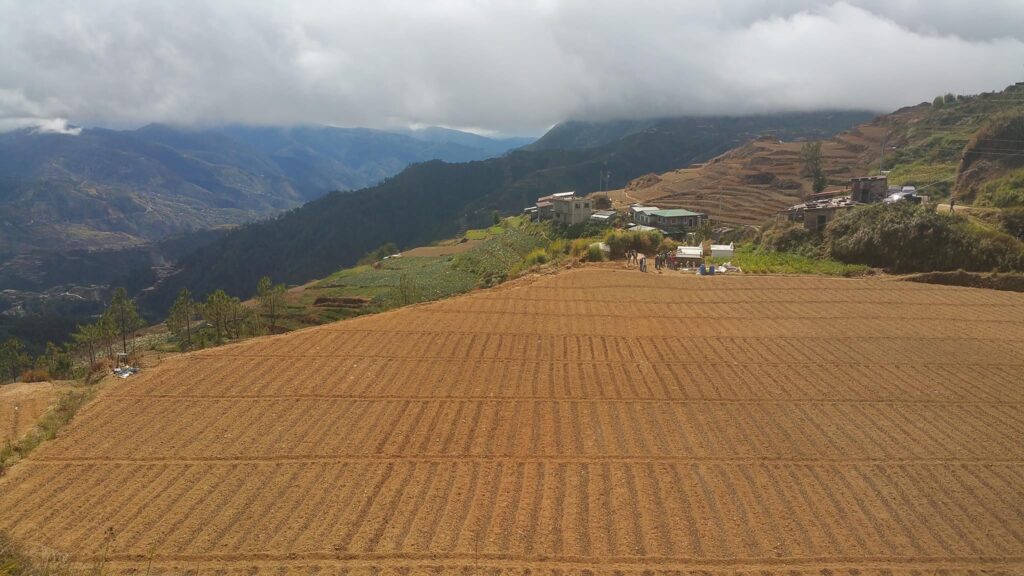
Although the dominant dialect or language in Buguias is Kankanaey, the original language of their ancestors can be traced to Kalanguya, similar to Nabaloi or Ibaloi language. Interactions and intermarriages with the neighboring towns of Kibungan, Bakun and Mankayan who are likewise Kankanaeys, their dominant language slowly saw transformation. Kalanguya, nevertheless, is still spoken in the boundaries of the municipality close to the province of Ifugao. Today, many speak two languages, the Kankanaey and Iloko. In their interactions with vegetable merchants, they have learned to understand and speak Tagalog or Pilipino. There are countless Elementary Schools and few High schools scattered in the municipality. But eventually after high school, most of the students go to the City of Baguio to pursue their college education.
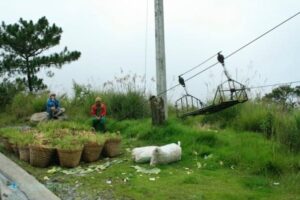 Up to the present, the main livelihood in the municipality is vegetable farming. In higher altitudes, like Natubleng and Sinipsip, climates are much colder that plants grow slower than in the warmer places like Central Buguias. It was noted however that vegetable that matures longer tastes better. The municipality has always been famous with their beautiful vegetable terraces especially when most fields turn vegetable green. With the introduction of different and imported plant seedlings and insecticides, however, more resistant pests have invaded the municipality destroying millions of crops every year consequently forcing many farmers to look for alternative livelihood.
Up to the present, the main livelihood in the municipality is vegetable farming. In higher altitudes, like Natubleng and Sinipsip, climates are much colder that plants grow slower than in the warmer places like Central Buguias. It was noted however that vegetable that matures longer tastes better. The municipality has always been famous with their beautiful vegetable terraces especially when most fields turn vegetable green. With the introduction of different and imported plant seedlings and insecticides, however, more resistant pests have invaded the municipality destroying millions of crops every year consequently forcing many farmers to look for alternative livelihood.
Going to Buguias today, one would notice but a few trees in some areas, far in between. Most if not all available areas had been terraced and tilled as vegetable farms. There are probably no more wild animals to be hunted in the remaining wooded areas where Lamia-en and the legendary Apo Anno used to hunt. Incidentally, Buguias is also a tributary of the major Agno River that supplies three hydroelectric dams. One of which is Ambuklao Dam, whose efficiency and performance have dismally deteriorated due to heavy siltation through the years. If the state of the Agno River and the its surrounding environs remain unchanged, soon the other dams downstream, Binga and San Roque, will likewise meet the fate of Ambuklao. Recently, Ambuclao was rehabilitataed but it’s not immune to siltation unless preventive measures and reforrestation are done.
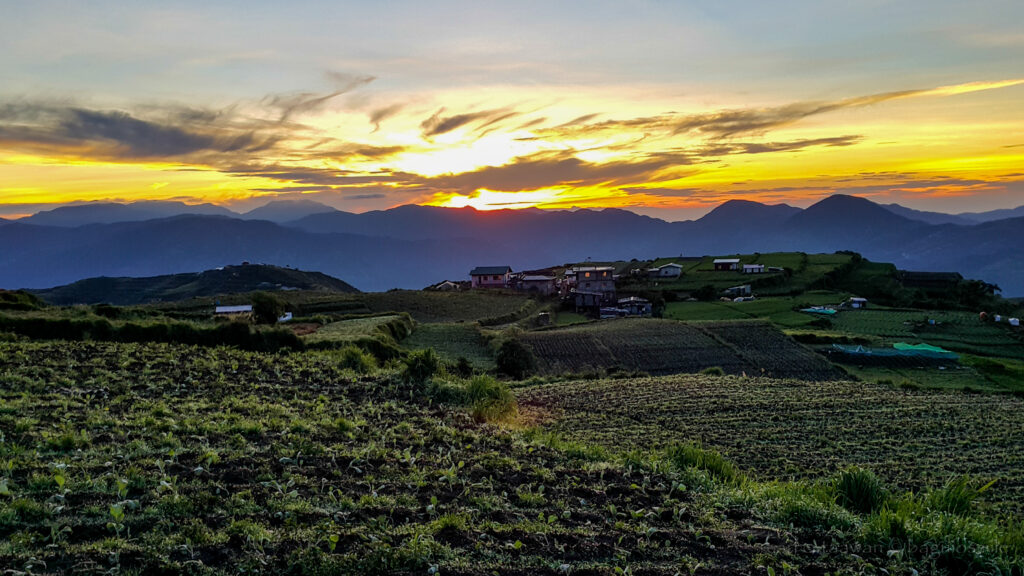 Having grown up in Buguias, this writer, an eighth generation offspring of Lamia-en, has seen the last of the few remaining Benguet pine trees on many of the land tracts before they have been transformed into vegetable gardens that we now see. Unless the descendants of the great hunter Lamia-en start to maintain check-and-balance between nature and their way of life, we may never again experience the once exceptional state of Buguias; times when weddings, festivals and town gatherings are embellished with native flowers and flamboyant butterflies dancing to the sounds of vibrant birds ever abundant in the forests nearby. Carl C. Taawan
Having grown up in Buguias, this writer, an eighth generation offspring of Lamia-en, has seen the last of the few remaining Benguet pine trees on many of the land tracts before they have been transformed into vegetable gardens that we now see. Unless the descendants of the great hunter Lamia-en start to maintain check-and-balance between nature and their way of life, we may never again experience the once exceptional state of Buguias; times when weddings, festivals and town gatherings are embellished with native flowers and flamboyant butterflies dancing to the sounds of vibrant birds ever abundant in the forests nearby. Carl C. Taawan
 The Kankana-ey Calendar: A Timeless Symphony of Nature and Culture
The Kankana-ey Calendar: A Timeless Symphony of Nature and Culture 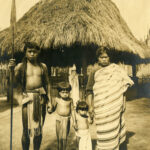 Igorots: The so-called savages of the Cordilleras
Igorots: The so-called savages of the Cordilleras 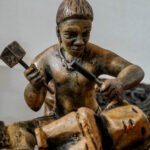 Od-odio, the Narra Tree Song
Od-odio, the Narra Tree Song 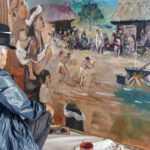 Baguio Creatives finding ways to rise above Pandemic
Baguio Creatives finding ways to rise above Pandemic  Baguio City Creative Christmas Trees
Baguio City Creative Christmas Trees 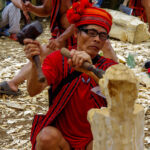 How a wooden spoon started a creative village
How a wooden spoon started a creative village  The Sagada Way
The Sagada Way  The Mountain Trail Thrill
The Mountain Trail Thrill  Baguio stages first Creative Festival
Baguio stages first Creative Festival 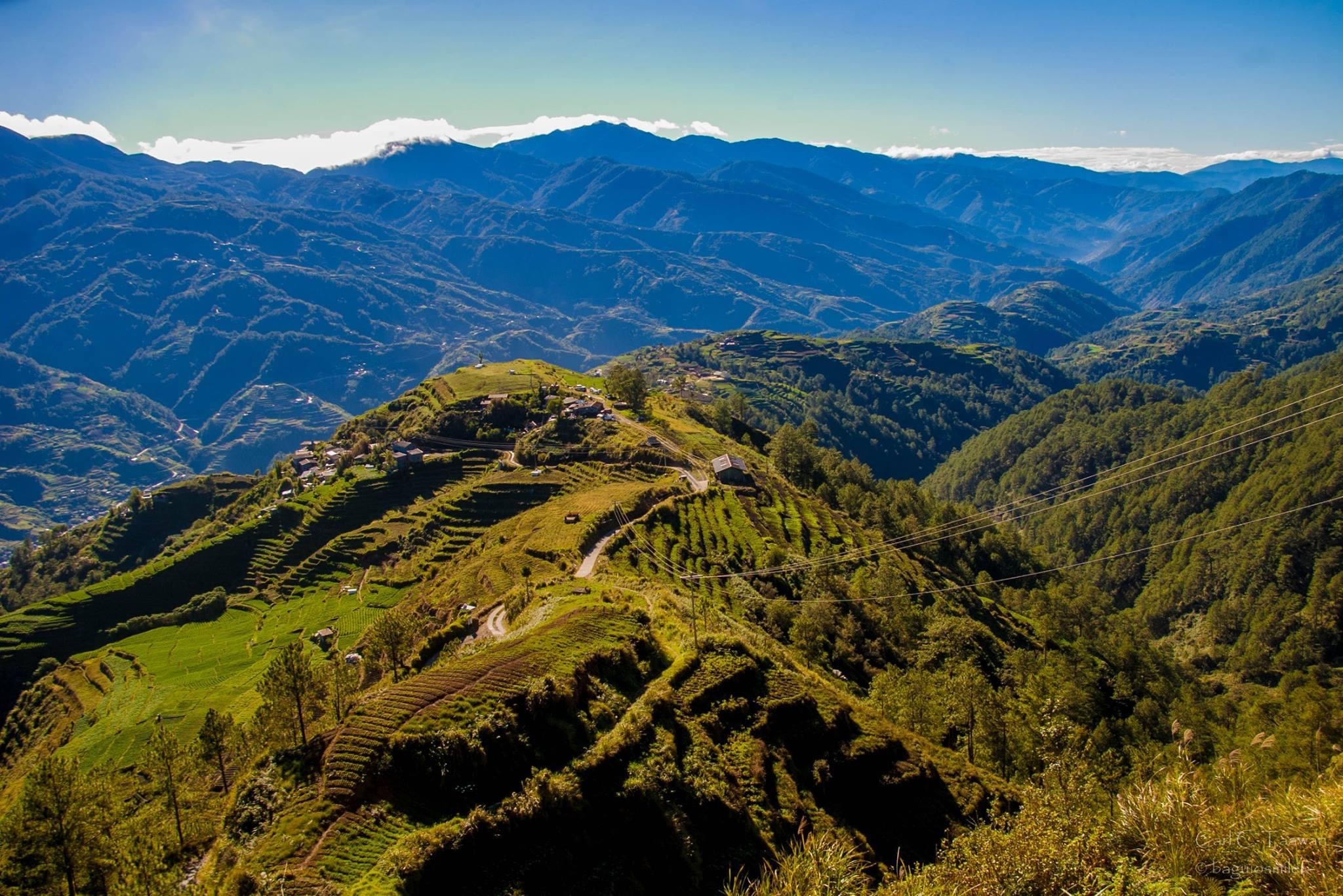
Yes, Art. In fact, we should start uploading all the reportage that we've done during the Homecoming of Apo Anno.
I regret not having clipped or bought all the local papers that carried the many different angles and details of Apo Anno's folk heroism.
nice read!
I wonder if Lamia-en during his heydey met Tugtug-aka or his son Anno of Buguias centuries ago. I was briefed by Ike Pikpikan about these father and son hunters when we brought home Apo Anno to his original resting place in Nabalikong sometime in 1998. I also witnessed Ike being possessed by a spirit in a ritual 30 or so days after the remains of the mummified Anno got settled in his cave. Welcome to ethnographical reportage. Agbiag ka!
Exceptional. Thanks for the history lesson….
you should write a book hehehe.. nice article 🙂
ohhhhhhhhhhhhh… s dat so…………….am proud of it